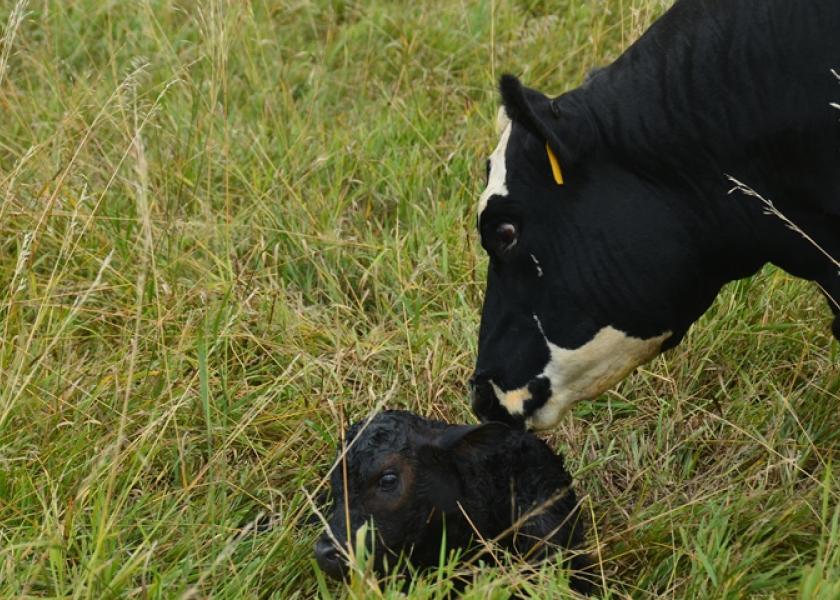Colostrum: The First Feeding for the Future

Rosslyn Biggs, DVM, is Extension Beef Veterinarian at Oklahoma State University
Through colostrum intake, the calf receives passive immunity from its mother to help protect it from diseases early in life. Failure of passive immunity transfer drastically increase a calf’s likelihood to develop diseases including those that can lead to death. The cow’s health can directly impact the quality of colostrum. Therefore, it is important that the cow have appropriate nutrition and be on a good health program that includes vaccinations. This insures the highest quality colostrum. Age and genetics also influence quality. Generally, colostrum quality is less in heifers as compared to mature cows.
It is essential that calves receive quality colostrum as soon as possible following birth. After 6 hours of age, the calf’s intestine begins to lose the ability to adequately absorb colostral components. Virtually no intestinal absorption of antibodies occurs after 24 hours of age.
A calf is always best served by receiving quality cow-sourced colostrum from its dam. However, producers should have replacement options if the calf’s dam cannot be milked. The best option for replacement is most often colostrum from a cow in the same herd. Dairy origin or other outside farm colostrum should only be used if verified to be free of diseases like Johne’s. Commercial quality colostrum replacements are good to have on hand if quality fresh or frozen cow-sourced colostrum is not available. Commercial dry preparations should be labelled for replacement, not just supplementation.
If an otherwise healthy cow loses a calf at birth, producers are wise to milk her to obtain the unused colostrum. Colostrum retains its many qualities only when frozen. Fresh colostrum can be stored in 1-quart doses by putting that much in a gallon-size freezer bag. When storing, be sure to leave space in the bag to allow for expansion. Bags can easily be stored flat in a deep freezer. Refrigerator-freezer combinations should be avoided as they often have a thaw and freeze cycle.
When the time comes to thaw the colostrum for feeding, place the freezer bag in warm water to gradually thaw. Do not microwave or use boiling water to heat.
On average, a calf should receive 5 to 6% of its body weight within the first four to six hours, with a repeated feeding of the same amount at 4 to 6 hours later. About 2 quarts of colostrum should be administered to an 80-pound calf at each feeding. Ongoing research supports early colostrum administration is best if delivered by 4 hours of age. Understanding that most births occur unattended, producers should not wait to administer colostrum if there is evidence the calf has not nursed.
Here is a classic Sunup TV segment by Dr Glenn Selk on the signs of calving.







